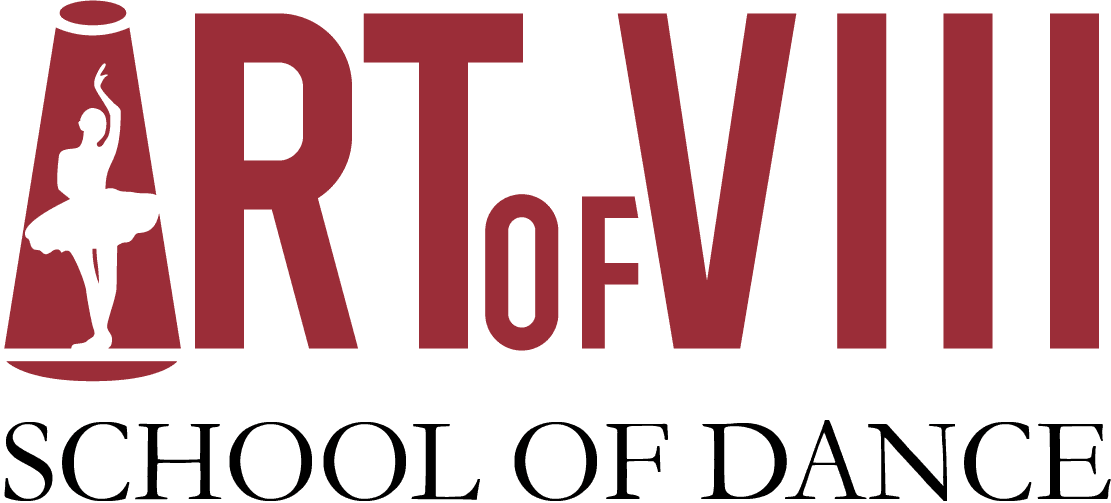The Evolution of Jazz: Key Trends Over the Decades
Introduction to Jazz
Welcome to the vibrant world of jazz, where every note tells a story and every performance is a unique adventure! Jazz music isn’t just a genre; it’s a cultural phenomenon that has evolved through the decades, influencing countless artists and genres along the way. From the lively sounds of Dixieland music to the smooth grooves of smooth jazz, this blog post will take you on a journey through its rich history and key trends.
Definition of Jazz
At its core, jazz is an improvisational music style that originated in the African American communities of New Orleans in the late 19th and early 20th centuries. It blends elements from various musical traditions, including blues, ragtime, and even classical music. You might think of it as a musical melting pot where creativity flows freely – much like a funky gumbo simmering with unexpected flavors!
Importance of Jazz in Music History
The significance of jazz in music history cannot be overstated. It played a crucial role in shaping modern music and continues to influence genres such as rock, pop, and hip-hop. Jazz musicians have not only pushed boundaries but have also paved the way for future generations. For instance:
- Jazz Age (Roaring Twenties): This period saw jazz explode into mainstream culture, giving rise to famous jazz artists like Louis Armstrong and Duke Ellington.
- Swing Music: The 1930s introduced big band sounds that got everyone dancing – talk about a party!
- Bebop Jazz: In the 1940s, artists like Charlie Parker took jazz into new territories with complex rhythms and harmonies.
- Modern Jazz: Today, we see diverse styles such as fusion jazz, free jazz, and even contemporary jazz, showcasing how adaptable this genre truly is.
A fun fact: In 2020, jazz music sales accounted for 1.1% of total music sales in the United States! Talk about keeping it alive!
Overview of the Blog Post Structure
This blog post will explore key trends in jazz over the decades while highlighting influential jazz musicians, iconic jazz bands, and unforgettable moments from legendary jazz festivals. We’ll dive into:
- The roots of classic jazz and its evolution.
- The impact of technological advancements on live performances.
- A look at famous venues where magic happens – think smoky clubs filled with energy!
- The role of education programs in fostering new talent.
- A glimpse into how contemporary artists are redefining this genre for future audiences.
Buckle up as we explore how this timeless art form continues to resonate with listeners around the globe! Whether you’re a die-hard fan or just dipping your toes into this musical ocean, there’s something here for everyone!
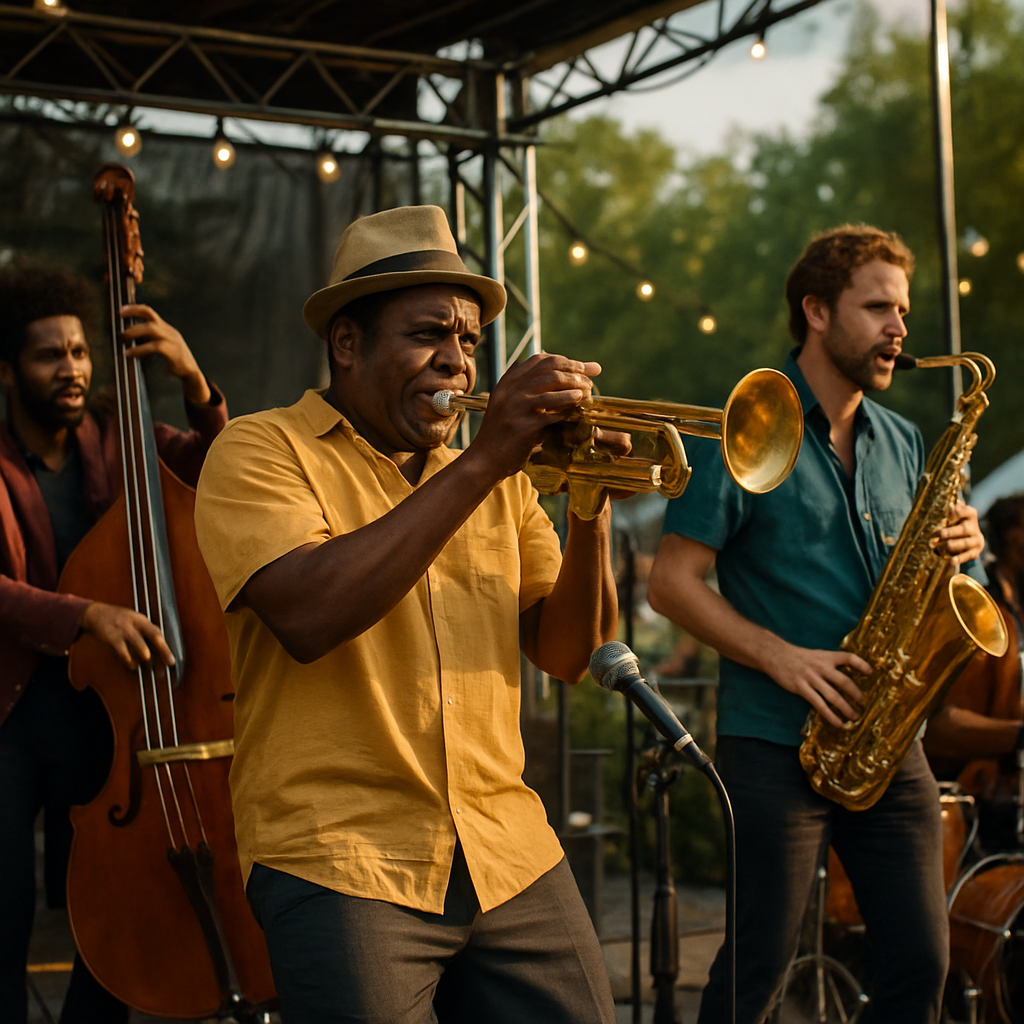
The Birth of Jazz (1900s-1920s)
Ah, the birth of jazz! Picture it: the vibrant streets of New Orleans in the early 20th century. A melting pot of cultures, where African American traditions collided with European musical influences to create a sound that would change the world forever. This was the dawn of jazz music, and it was as revolutionary as a new dance move that everyone just had to learn.
Origins in New Orleans
The roots of jazz can be traced back to the lively city of New Orleans, where Dixieland music first took shape. Here, musicians blended elements from various genres such as blues and jazz, ragtime music, and even folk tunes. This unique fusion created a rich tapestry of sound that set the stage for what was to come.
As local musicians gathered in clubs and on street corners, they began experimenting with improvisation – a hallmark of jazz. Imagine groups jamming together, each player adding their own flair while still keeping in sync with the rhythm. It was like a musical conversation that never ended!
Influence of African American Culture
The influence of African American culture on jazz cannot be overstated. The emotional depth found in gospel music and spirituals poured into jazz, giving it an authenticity that resonated deeply with audiences. This cultural infusion brought forth not only new sounds but also new stories – tales of struggle, joy, and everything in between.
In this vibrant cultural landscape, jazz became more than just music; it was a voice for social change and expression. The genre served as an outlet for artists to share their experiences and connect with others across racial divides.
Key Figures: Louis Armstrong, Jelly Roll Morton
No discussion about the birth of jazz would be complete without mentioning some key figures who shaped its course:
- Louis Armstrong: Often referred to as “Satchmo,” he revolutionized jazz with his trumpet playing and charismatic stage presence. His ability to improvise made him one of the most influential jazz musicians ever.
- Jelly Roll Morton: A pioneer who claimed to have invented jazz, Morton blended ragtime rhythms with blues influences. His compositions laid down many foundational elements that continue to define jazz today.
A fascinating statistic: In 2019, there were approximately 33 million jazz listeners in the United States! That’s a whole lotta toe-tapping!
The contributions from these artists not only highlighted their immense talent but also paved the way for future generations. They inspired countless jazz bands, leading to an explosion of styles that would emerge throughout the decades.
The 1920s were marked by what we now call the Jazz Age – an era where swing music took over dance halls and radio waves alike! As we move forward in this blog post, we’ll explore how this incredible genre evolved through time while continuing to influence modern sounds today.
The Swing Era (1930s-1940s)
Welcome to the Swing Era, a time when jazz hit the mainstream like a dance craze that swept the nation! This period, spanning the 1930s and 1940s, was characterized by the rise of big bands and swing music, transforming jazz music from intimate club settings to grand ballrooms filled with dancers and energy.
Rise of Big Bands and Swing Music
During this exhilarating decade, big band music became the soundtrack of America. Think of it as jazz on steroids – larger ensembles with sections dedicated to brass, woodwinds, and rhythm. The sound was bold, brassy, and utterly infectious!
Some key features of swing music included:
- Syncopated rhythms: The beat had a bounce that made you want to move your feet.
- Improvisation: Musicians would take turns shining in solos – think saxophone solos that could make you weep.
- A focus on dance: Swing music was designed for dancing. You could find couples jitterbugging across the floor at swing clubs every weekend!
This era birthed legendary jazz bands, such as those led by Duke Ellington and Count Basie, who crafted timeless classics that are still celebrated today.
Cultural Impact During the Great Depression
The Great Depression may have cast a shadow over much of American life in the 1930s, but jazz musicians found ways to uplift spirits through their art. Jazz clubs became havens for people looking to escape their troubles and enjoy some live jazz. It was like a musical refuge amidst economic turmoil!
Jazz festivals, though not as widespread yet, began popping up as communities rallied around local talent. These events provided platforms for emerging artists while fostering camaraderie among jazz enthusiasts.
A noteworthy statistic: Between 1935 and 1945, more than 300 big bands were recorded in America! That’s an impressive feat for any genre!
This cultural impact extended beyond just entertainment; it played a role in shaping American identity during tough times. Jazz became synonymous with resilience – a soundtrack for perseverance.
Notable Artists: Duke Ellington, Benny Goodman
No discussion about this era would be complete without mentioning some of its most influential figures:
- Duke Ellington: A composer, bandleader, and pianist who elevated jazz to an art form. His orchestra was known for its sophisticated sound and innovative arrangements.
- Benny Goodman: Dubbed the “King of Swing,” he brought jazz into mainstream culture through his famous concerts at Carnegie Hall. His collaborations with various musicians helped bridge racial divides in music.
Their contributions not only defined an era but also laid down the groundwork for future developments in jazz history. As we transition into the next chapter of jazz evolution-where bebop starts to challenge swing-these legends will always be remembered as pillars of this vibrant genre.
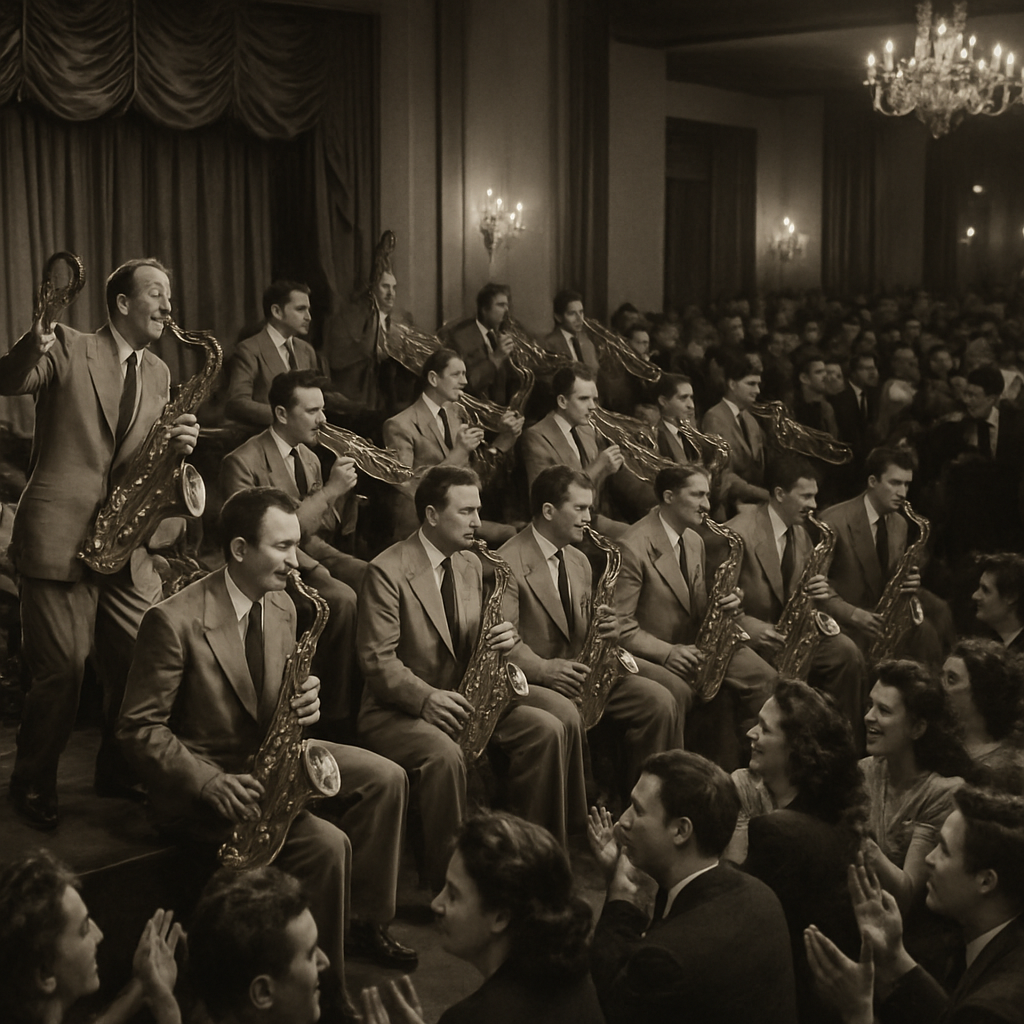
Bebop and Modern Jazz (1940s-1950s)
Welcome to the exhilarating world of bebop jazz and modern jazz, where the tempo quickens and the complexity deepens! In the 1940s and 1950s, jazz took a bold leap forward, leaving behind the danceable rhythms of swing music for a more intricate, improvisational style that would forever change the landscape of jazz music.
Characteristics of Bebop Style
Bebop emerged as a reaction against the polished sounds of big bands. Imagine trading in your smooth ride for a zippy sports car – that’s bebop! Here are some defining characteristics:
- Complex Harmonies: Bebop musicians embraced intricate chord progressions that challenged their skills and pushed the boundaries of traditional jazz.
- Fast Tempos: The pace picked up significantly, with musicians showcasing their technical prowess through rapid-fire solos.
- Focus on Improvisation: Unlike earlier styles, where arrangements were more structured, bebop emphasized spontaneous creativity. It was like jazz musicians were having a musical conversation at lightning speed!
This shift allowed artists to express themselves more freely, leading to groundbreaking compositions that remain staples in the jazz standards repertoire.
Innovators: Charlie Parker, Dizzy Gillespie
No discussion about bebop would be complete without highlighting its trailblazers:
- Charlie Parker: Known affectionately as “Bird,” Parker revolutionized jazz with his virtuosic alto saxophone playing. His ability to weave complex melodies over rapid chord changes set a new standard for jazz musicians.
- Dizzy Gillespie: A trumpet virtuoso with an infectious personality, Gillespie brought a playful spirit to bebop. His innovative use of extended harmonies and rhythms paved the way for future explorations in modern jazz.
Together, these legends created an electrifying atmosphere that inspired countless others to push their creative boundaries.
The Shift Towards Improvisation and Complexity
The transition from swing to bebop marked a significant shift in how jazz was perceived. No longer just dance music, it became an art form demanding deep listening and appreciation. This evolution led to various sub-genres such as cool jazz, which offered a smoother sound profile compared to its frenetic predecessor.
A striking statistic: By the late 1950s, over 50% of all recorded jazz albums were classified as bebop or modern jazz! Talk about making waves!
This era also saw the emergence of iconic venues dedicated to live performances where fans could experience this revolutionary sound firsthand. Famous jazz clubs, like Birdland in New York City, became hotbeds for innovation and experimentation.
The legacy of bebop continues today; it laid down a foundation for later styles such as free jazz, which further explored improvisation without boundaries. As we delve deeper into this blog post series on jazz evolution, we’ll continue to uncover how these trends have shaped contemporary sounds while paying homage to those who came before.
The Cool Jazz Movement (195s)
Welcome to the suave world of cool jazz, where the beats are smooth, the vibes are chill, and the improvisation flows like a gentle river. Emerging in the 195s, this genre was like jazz’s laid-back cousin who prefers sipping a martini over shaking it up on the dance floor. Cool jazz brought a sophisticated sound that contrasted sharply with the frenetic energy of bebop, making it an essential chapter in jazz history.
Defining Features of Cool Jazz
So, what sets cool jazz apart from its more energetic siblings? Picture this: you’re lounging in a dimly lit club, and instead of a whirlwind of sound, you’re enveloped in smooth melodies that invite you to relax and unwind. Here are some defining features:
- Relaxed tempos: Unlike bebop’s frenetic pace, cool jazz embraces slower rhythms that allow for more subtle expression.
- Sophisticated harmonies: Musicians often employed complex chord structures that added depth to their compositions.
- Use of space: The emphasis on silence and pauses creates tension and anticipation, making every note count.
- Incorporation of classical elements: Many cool jazz artists drew inspiration from classical music, integrating orchestral instruments into their arrangements.
This unique blend made cool jazz not just music but an experience-like enjoying a fine wine while watching the sunset.
Key Artists: Miles Davis, Dave Brubeck
No exploration of cool jazz would be complete without mentioning its titans. Enter Miles Davis and Dave Brubeck-two luminaries whose contributions shaped this genre like clay in an artist’s hands:
- Miles Davis: The architect behind the iconic album “Kind of Blue,” Davis revolutionized cool jazz with his innovative approach. His ability to create mood through minimalist phrases made his trumpet sing with emotion.
- Dave Brubeck: Known for his experimental time signatures and catchy melodies, Brubeck’s album “Time Out”, featuring “Take Five,” became a landmark recording that brought cool jazz into mainstream consciousness.
Together, these artists not only defined cool jazz but also influenced countless others who followed in their footsteps. Their works remain staples in any serious jazz standards repertoire.
Cultural Context and Influences on the Genre
The cultural landscape of America during the 195s played a crucial role in shaping cool jazz. As post-war optimism settled in, people craved new forms of expression-something fresh yet familiar. This desire for sophistication found its way into music as artists began experimenting with new sounds that reflected modern life.
A fascinating statistic: By 1959, approximately 30% of all recorded jazz albums were categorized as cool jazz! Talk about making waves!
Cool jazz also drew influences from various sources including classical music and even non-Western styles. This eclecticism allowed musicians to broaden their horizons and create something truly unique-a sound that could be both introspective and accessible at once.
The emergence of famous jazz clubs, particularly on the West Coast (think San Francisco), provided platforms for these artists to showcase their talents. These venues became hotbeds for innovation where audiences could experience live performances that encapsulated the essence of coolness!
If you’re looking to dive deeper into this genre or catch some live performances, consider checking out local jazz festivals. They often feature up-and-coming artists who are keeping the spirit alive while adding their own flair!
The legacy of cool jazz continues today as contemporary musicians draw inspiration from its smooth sounds while infusing modern elements into their work. As we groove along through this blog post series on the evolution of jazz, stay tuned for more exciting explorations into how each era has left its mark on this timeless art form.
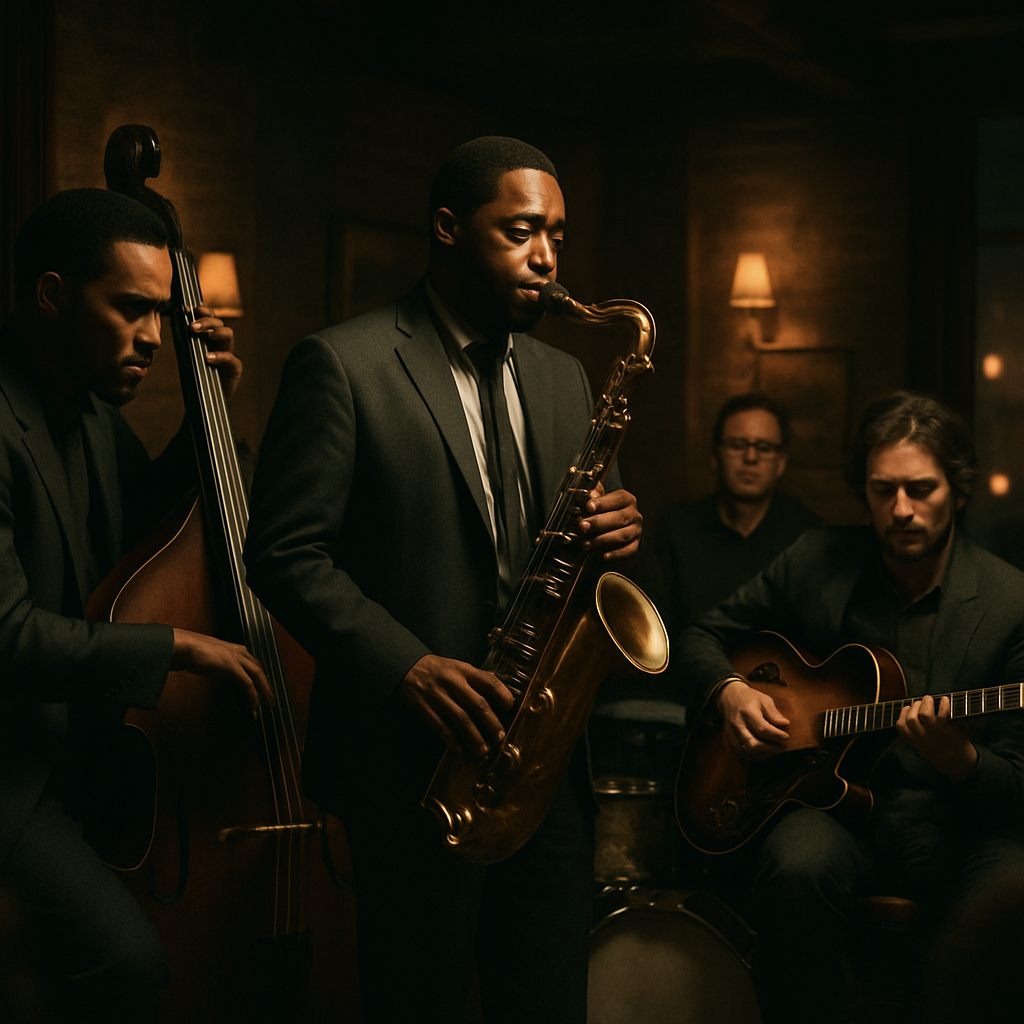
Free Jazz and Avant-Garde (196s)
Welcome to the wild and wonderful world of free jazz and avant-garde jazz, where the rules are tossed out the window, and creativity reigns supreme! Emerging in the 196s, this genre was like a rebellious teenager challenging authority – pushing boundaries and redefining what jazz music could be. If you thought jazz was all about smooth melodies and structured rhythms, think again!
The Philosophy Behind Free Jazz
At its core, free jazz is about liberation. Imagine an artist with a blank canvas; they can splash paint in any direction without worrying about staying within the lines. This genre emphasizes spontaneity and improvisation, allowing musicians to express themselves without constraints. It’s like jazz musicians decided to throw a party where everyone plays what they feel – no RSVP required!
The philosophy behind free jazz challenges traditional concepts of melody, harmony, and rhythm. Instead of following a set structure, artists explore sound in its purest form. This approach invites listeners to experience music differently, focusing on emotion rather than technical perfection.
Pioneers: Ornette Coleman, John Coltrane
No exploration of free jazz would be complete without mentioning its trailblazers:
- Ornette Coleman: Often credited as the father of free jazz, Coleman’s album “The Shape of Jazz to Come” shattered conventional norms with its bold experimentation. His unique approach to improvisation encouraged musicians to break free from traditional chord progressions.
- John Coltrane: A visionary saxophonist who took the avant-garde movement even further with his work on albums like “A Love Supreme.” Coltrane’s exploration of spirituality through music transformed how we perceive jazz improvisation.
Together, these pioneers paved the way for countless jazz musicians, inspiring them to embrace freedom in their artistic expression.
The Impact on Jazz Improvisation and Structure
The rise of free jazz had a profound impact on how we understand jazz history. The emphasis on improvisation meant that performances could vary dramatically from one night to the next – it was like attending a different concert every time! This unpredictability added an element of excitement that kept audiences on their toes.
This era also saw a shift in how musicians approached structure. Traditional forms began to dissolve as artists experimented with new ways to create soundscapes. The focus turned from melody-driven compositions to exploring texture and timbre. It was as if musicians were painting with sound rather than following a pre-set design.
A striking statistic: By the late 1960s, approximately 20% of all recorded jazz albums were classified as avant-garde or free jazz! Talk about shaking things up!
This newfound freedom allowed for incredible collaborations among artists from various backgrounds, leading to innovative fusions that continue to influence contemporary styles today. As we journey through this blog post series on the evolution of jazz, keep an ear out for how these revolutionary ideas have shaped modern sounds!
Jazz Fusion and Beyond (197s-Present)
Welcome to the era of jazz fusion and beyond, where the genre took a bold leap into the realms of rock, funk, and everything in between! From the 197s onwards, jazz music began to blend with various styles, creating a rich tapestry of sounds that would redefine what we know as jazz today. Imagine jazz musicians donning their best rock star outfits and cranking up the volume-this is where the magic happens!
Merging Jazz with Rock and Funk Elements
The 197s were a transformative time for jazz musicians. Bands started incorporating electric instruments, like the electric guitar in jazz, and synthesizers into their performances. This fusion created a sound that was both energetic and innovative. Think of it as jazz taking a road trip with rock music-stopping at funky roadside diners along the way!
Some defining features of this fusion include:
- Electric Instruments: The use of electric guitars and keyboards added a new dimension to traditional jazz sounds.
- Rhythmic Complexity: Funk grooves brought a new level of complexity to rhythm sections, making you want to dance while sipping your drink.
- Extended Improvisation: Musicians began exploring longer improvisational segments, allowing for more creative expression.
This blending of genres paved the way for an exciting new wave of jazz bands, capturing audiences who might not have been drawn to classic jazz.
Influential Artists: Herbie Hancock, Chick Corea
No discussion about jazz fusion would be complete without highlighting two titans who shaped this movement:
- Herbie Hancock: With his groundbreaking album “Head Hunters,” Hancock merged funk rhythms with intricate jazz harmonies, creating tracks that are still celebrated today. His use of synthesizers changed how we think about jazz instruments.
- Chick Corea: Another pioneer in fusion jazz, Corea’s band Return to Forever blended Latin influences with complex jazz structures. His compositions are a testament to how diverse this genre can be.
A fascinating statistic: By 1980, approximately 25% of all recorded jazz albums were classified as fusion! Talk about making waves!
Their contributions not only pushed boundaries but also inspired countless emerging artists to experiment with their own styles.
The Evolution into Contemporary Styles and Genres
The evolution of jazz music didn’t stop at fusion; it continued to branch out into various contemporary styles that reflect today’s musical landscape. Genres like smooth jazz, which emerged in the late 1980s, offered listeners an accessible sound characterized by mellow melodies and polished production-perfect for those cozy evenings or long drives!
This era also saw the rise of avant-garde jazz, where artists pushed even further beyond traditional boundaries. Musicians began incorporating elements from world music, hip-hop beats, and even electronic influences into their performances. It’s like they threw every genre into a blender and hit ‘puree’-the results were deliciously unexpected!
If you’re looking for live experiences that showcase modern interpretations of this genre, check out local jazz festivals. They often feature innovative artists who are redefining what it means to play jazz today!
The legacy of these trends continues as contemporary artists draw inspiration from both classic forms and modern influences. As we wrap up our exploration through decades of evolution in jazz history, it’s clear that this genre remains vibrant and ever-changing-a true testament to its enduring appeal!
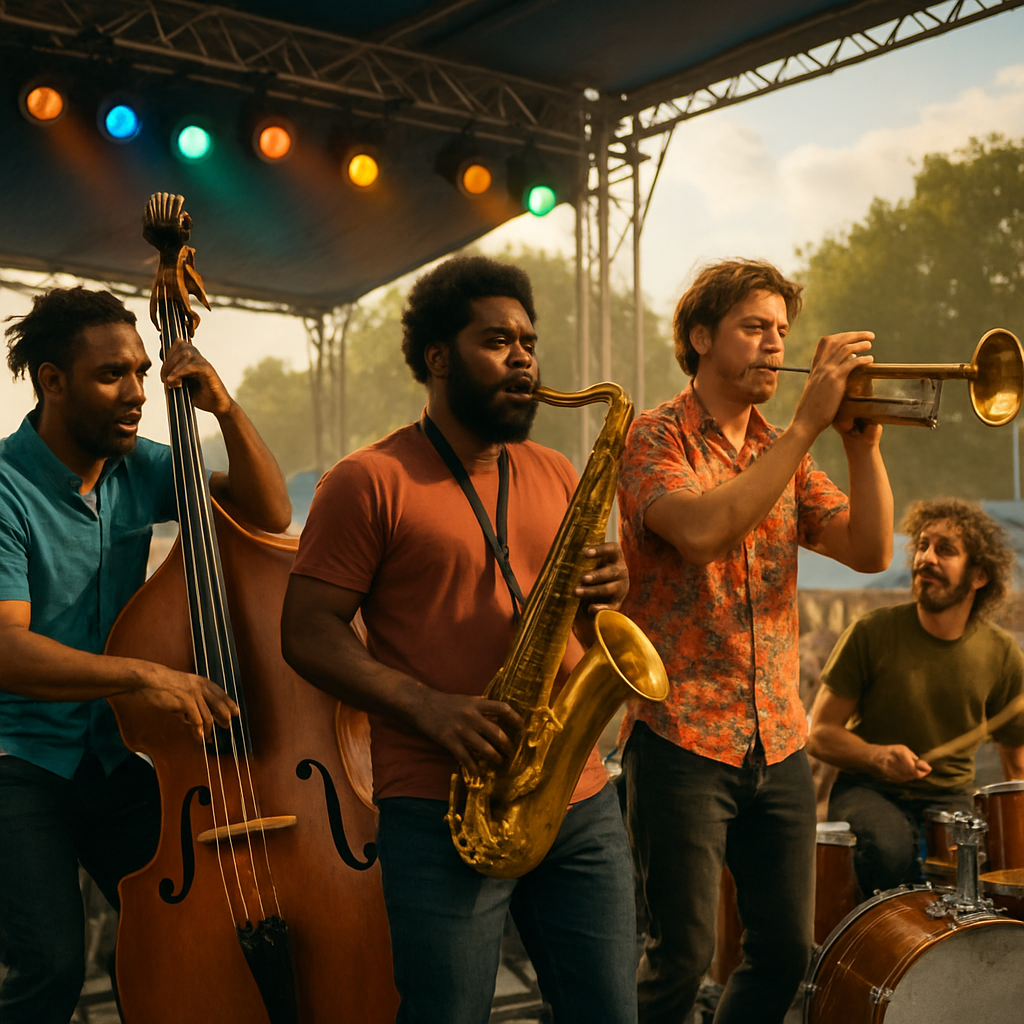
The Future of Jazz
As we stand on the brink of a new era in jazz, it’s clear that this genre is far from stagnant. In fact, it’s evolving faster than you can say “saxophone solos in jazz songs.” So, what does the future hold for jazz music? Let’s dive into some of the exciting trends and innovations shaping the soundscape.
Technological Advancements and Their Impact
Remember when jazz was all about live performances in smoky clubs? Well, technology has thrown a curveball! Today, jazz musicians are embracing digital tools to create and share their art like never before. Imagine this:
- Virtual Collaborations: Artists from different corners of the globe can now jam together online, creating unique blends of styles. It’s like a worldwide jazz festival happening 24/7!
- Streaming Platforms: With platforms like Spotify and Apple Music, listeners have access to an endless library of jazz albums. This accessibility is helping to introduce new audiences to classic and contemporary jazz.
- Music Production Software: The rise of affordable recording software allows aspiring artists to produce high-quality tracks right from their bedrooms. Think of it as democratizing the jazz scene!
This tech-savvy approach not only broadens the reach but also encourages experimentation. Expect to hear innovative sounds that blend traditional elements with modern influences!
The Rise of Fusion Genres
If you thought jazz was just about improvisation and complex harmonies, think again! The future is all about fusion – blending jazz with genres like hip-hop, electronic music, and even world music.
This cross-pollination creates fresh sounds that resonate with younger audiences. Consider:
- Jazz-Hip-Hop Fusion: Artists like Robert Glasper are redefining what it means to play jazz by incorporating beats and flows from hip-hop culture. It’s an electrifying mashup!
- Global Influences: Musicians are increasingly drawing inspiration from diverse cultural backgrounds, leading to unique fusions such as Latin jazz, which combines rhythmic elements from Latin music with traditional jazz structures.
- Soul Jazz Revival: There’s a growing appreciation for soul jazz, where artists merge soulful melodies with improvisational flair. It’s a delicious blend that keeps listeners coming back for more!
This trend reflects a broader cultural shift towards inclusivity and collaboration, making jazz more relevant than ever.
The Role of Education in Shaping Future Artists
The future of jazz music also hinges on education. As more institutions offer specialized programs in jazz education, young talent is being nurtured across various styles.
A few key points include:
- Coding Jazz Skills: Many programs now integrate technology into their curriculum, teaching students how to use digital tools for composition and production.
- Diverse Genres in Curriculum: Schools are expanding their focus beyond traditional standards repertoire to include modern styles like fusion and free jazz.
- Workshops and Master: Events featuring famous jazz artists provide invaluable learning experiences for aspiring musicians looking to hone their skills.
A compelling statistic: According to recent studies, students who engage in music education are 20% more likely to pursue careers in creative fields! Talk about hitting all the right notes!
This emphasis on education ensures that new generations will carry forward the rich legacy of jazz while infusing it with fresh ideas.
The Revival of Live Jazz Experiences
jazz concerts. As we move forward, expect a resurgence in live performances as audiences crave authentic connections with artists.
- Popping Up Jazz Clubs: Intimate venues are making a comeback where fans can enjoy acoustic sets while sipping cocktails – just like the good old days!
- Themed Festivals: Jazz festivals are evolving into multi-genre events that cater not only to hardcore fans but also attract newcomers looking for an entertaining experience.
If you’re eager to explore this vibrant scene, keep an eye out for local jazz festivals; they’re fantastic places to discover emerging talent while enjoying great food and company!
The future is bright for jazz! With technological innovations paving new pathways, fusion genres pushing creative boundaries, educational initiatives nurturing talent, and live experiences thriving once again – this genre is set for an exciting evolution ahead. So grab your favorite jazz instruments, tune up those saxophones or trumpets, and get ready for an exhilarating ride through time!
Conclusion: The Legacy of Jazz Music
As we wrap up our exploration of jazz, it’s essential to reflect on how this genre has evolved through the decades and its lasting impact on the music landscape. From its humble beginnings in New Orleans to becoming a global phenomenon, jazz music has demonstrated an incredible capacity for adaptation and innovation.
Reflection on the Evolution of Jazz Through the Decades
The journey of jazz is like a winding river, branching out into various styles and influences. Each decade brought new flavors, from the exuberance of swing music in the 193s to the experimental sounds of free jazz in the 196s. This evolution reflects not only changes in musical tastes but also societal shifts, making jazz a mirror to our cultural history.
- The Roaring Twenties: Jazz became the soundtrack for a generation eager to celebrate life after World War I.
- The Swing Era: Big bands dominated dance halls, inviting everyone to join in on the fun.
- Bebop Revolution: Musicians like Charlie Parker pushed boundaries, turning jazz into a serious art form that demanded attention.
- Modern Innovations: Today’s artists blend genres, creating exciting fusions that keep jazz alive and relevant.
The Ongoing Relevance of Jazz in Modern Music
Fast forward to today, and you’ll find that jazz musicians are still at the forefront of creativity. The genre’s influence can be heard across various styles-hip-hop artists sample classic tracks while contemporary pop stars infuse their songs with jazzy elements. It’s like jazz is that cool friend who always knows how to stay relevant!
A striking statistic: In 2022, over 15% of popular music featured elements derived from jazz! Talk about making an impact!
Jazz clubs, festivals, and live concerts continue to thrive as audiences seek authentic experiences. Whether it’s an intimate acoustic set or a grand festival featuring famous jazz artists, there’s no denying that live performance brings something special to this genre.
The legacy of jazz is not just about preserving history; it’s about ongoing innovation and connection. As we look ahead, let’s celebrate this vibrant art form that continues to inspire generations! So whether you’re tapping your feet at a local jazz concert, exploring classic albums at home, or diving into new fusion genres-remember that you’re part of this beautiful journey!
